"Stalingrad hell". How the Russians changed the course of the war
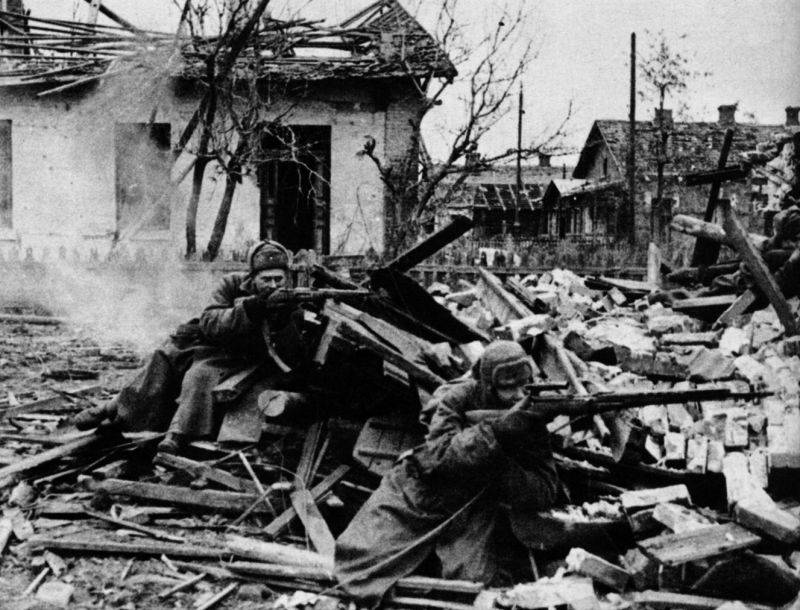
The shooters of Lieutenant Rogov's unit are fighting in the area of the Barrikady plant. November 1942
"Rather take the city into your own hands"
In August 1942, the German army broke through to the Volga, but could not take Stalingrad on the move. Heavy urban fighting ensued. The city burned and was destroyed. On September 12, 1942, Hitler at headquarters near Vinnitsa demanded "to take the city into his own hands rather than allow it to turn into an all-devouring focus for a long time." The commander of the 6th German Army, Paulus, asked for 3 divisions and promised to take the city in 10 days.
It is worth noting that the capture of the ruins of Stalingrad no longer had any special military significance. The Germans reached the Volga, securing the northern flank of their offensive in the Caucasus. Stalingrad ceased to be an important communications hub, which were destroyed or blocked, its factories were evacuated or destroyed. However, politics, propaganda and emotions were above reason. Stalingrad became a sacred symbol of the great war. Therefore, both sides fought as fiercely and stubbornly as possible. The Germans attacked fiercely, and the Russians fought to the death.
On September 13, 1942, the Germans launched an assault. They delivered the main blow in the direction of Mamaev Kurgan and the railway station. Hundreds of aircraft supported them from the air. From morning until dark the German aviationand artillery opened fire at night. The moorings and approaches to them were under the fire of guns and mortars around the clock. The delivery of troops and cargo for the 62nd Army was complicated to the limit.
The Soviet troops pushed back a little, but they stubbornly fought back and counterattacked. From the left bank of the Volga, our troops supported 250 guns and heavy mortars of the front-line artillery group, artillery of the 2nd tank corps, anti-aircraft artillery of the Stalingrad air defense corps area, 4 rocket artillery regiments and ships of the Volga military flotilla.
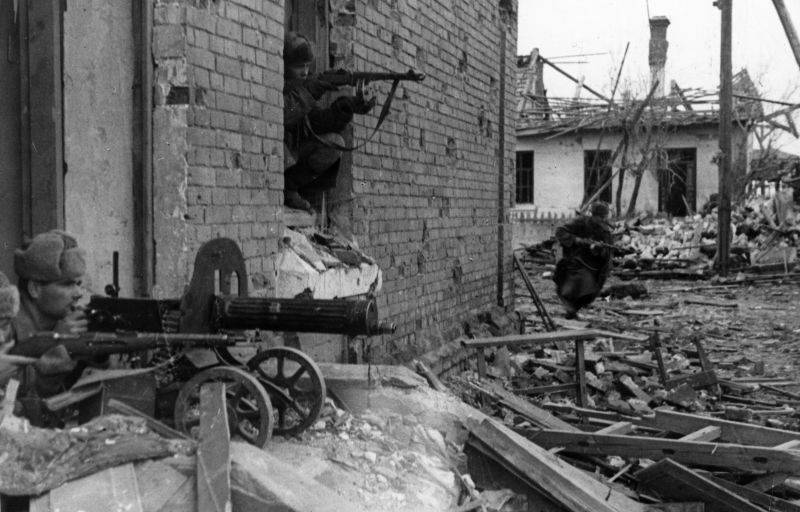
A Soviet machine-gun crew fires through a section of a street occupied by the Germans in Stalingrad. November 1942
The situation was extremely difficult. The Nazis captured Malakhov Kurgan, which dominated all of Stalingrad and the left bank of the Volga, the battle was at the command post of the 62nd Army of General Chuikov (he led the bloodless army on September 12). The Germans broke through to the central crossing.
The situation was saved by the 15th Guards Rifle Division of Rodimtsev (13 soldiers) transferred from the left bank on the night of September 10. The guards immediately entered the battle and drove the enemy out of the city center. By noon on September 16, our soldiers recaptured Malakhov Kurgan. However, in these fierce battles, the Guards Division was drained of blood and soon repelled enemy attacks.

"Stalingrad Hell"
The battle took on a real, almost apocalyptic character. Survivors called the battle "Stalingrad hell". Merciless fights went on for days. So, on the southern outskirts of Stalingrad, from September 17 to 20, there were battles for the highest elevator building in this part of the city, which was defended by a battalion of the 35th Guards Rifle Division. The elevator as a whole, but also its individual floors and storage facilities, changed hands several times.
The division commander, Colonel Dubyansky, reported to Chuikov:
There were dozens, hundreds of such objects and places in the city, large and small. For days, weeks and months there was a merciless struggle for every room, landing of stairs, floor, basement, house, workshop ruins or height. Until September 27, a bloody battle went on for the station. Thirteen times it changed hands, during each assault both sides lost hundreds of fighters. The Germans began to change tactics, abandoning frontal, large-scale attacks. They attacked in narrow areas, within 1–2 blocks, with the forces of a battalion or regiment, with the support of several tanks and self-propelled guns.
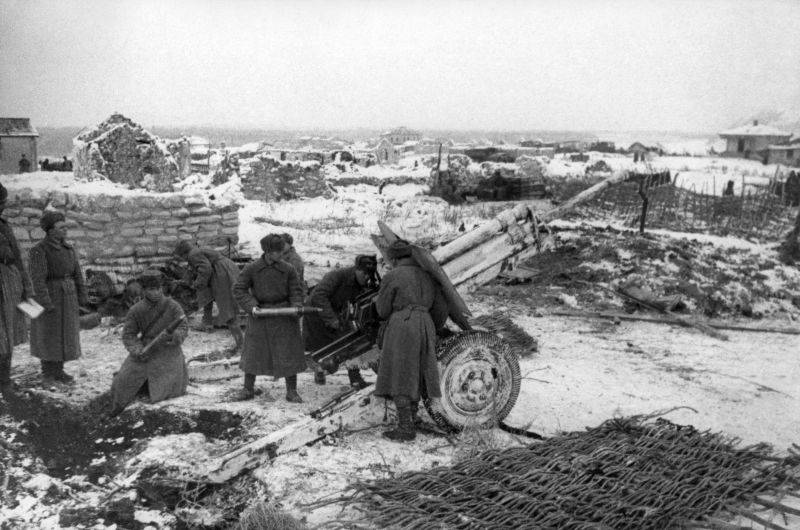
Soviet artillerymen firing from a 76,2 mm divisional gun mod. 1939 near Stalingrad. November 1942
The Soviet army was reinforced by the 95th and 284th rifle divisions, the 137th tank and 92nd marine brigade. The headquarters of the completely bled regiments were taken to the left bank, replenished and returned to their positions. The 62nd Army received brigade after brigade, division after division. According to Marshal Golikov, in September the 62nd Army received seven fresh full-blooded divisions and five separate rifle brigades, and nine bled-out divisions were withdrawn for replenishment. Armaments were flowing in a powerful stream.
On September 18, 1942, the Red Army launched a counterattack from the north with the forces of the 1st Guards and 24th Armies in order to restore a united front with the 62nd Army. It was a frontal attack on the bare steppe. The Germans had strong defenses here and were ready to attack. Our troops fruitlessly attacked until the end of the month, but could not break the enemy defenses. The 1st Guards Army, which suffered heavy losses, was disbanded.
On September 21, German troops with the forces of 5 divisions delivered a new powerful blow in Stalingrad. On the 22nd, the 62nd Army was cut in half. On the site of Rodimtsev's division, which literally ended, the Nazis reached the central crossing north of the Tsaritsa River. The Germans were able to attack the rear of the Soviet army and attack along the river.
General Rodimtsev recalled:
Chuikov threw the fresh 284th division of Lieutenant Colonel Batyuk into a counterattack. Russian soldiers in a fierce 2-day battle stopped the advance of the enemy from the area of the central pier to the north. By the evening of September 24, the fighting began to subside. The Germans were exhausted.
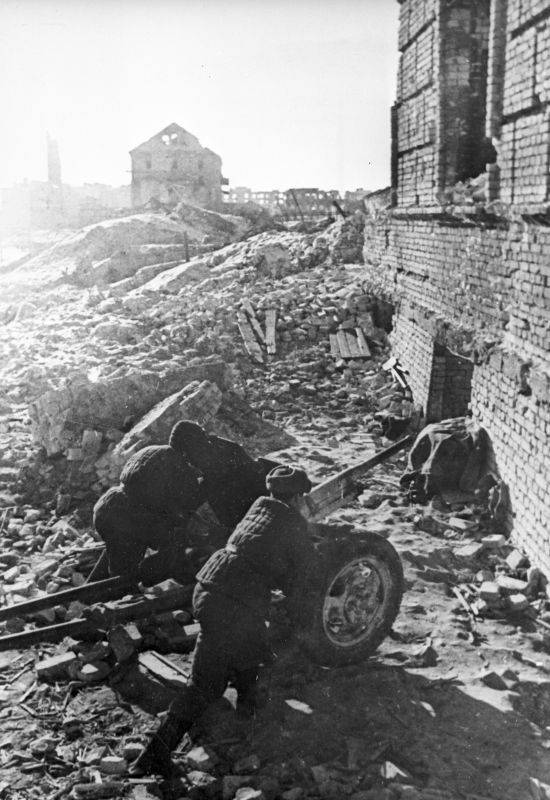
Soviet gunners set up a 45 mm 53-K cannon in a new position against the wall of a building in Stalingrad. November 1942
The triumph and the greatest glory of the Russian infantry
The Battle of Stalingrad led to the birth of a new Russian infantry, the stormtroopers. Soviet troops created strongholds with garrisons, which for quite a long time could conduct all-round defense on their own. Chuikovtsy during air strikes and artillery preparation of the enemy got close to the positions of the enemy, deliberately went into close combat. There was practically no neutral zone. The defenders of the city learned to let enemy tanks through, exposing them to the fire of anti-tank artillery, armor-piercers, and cutting off the infantry. They skillfully erected engineering barriers and camouflaged themselves, maneuvered and counterattacked, massively used snipers, among which real heroes appeared.
Street fighting tactics were born. They acted not only in platoons, squads, but also in assault groups, small in number, but mobile and well-armed with machine guns, grenades, flamethrowers, explosives and knives. Behind the attack aircraft were reinforcement groups armed with machine guns, light mortars, anti-tank rifles and mines.
The Red Army soldiers and their direct commanders received real freedom, left without a high command, which was located beyond the Volga. Soldiers and battalion commanders, in order to survive and win, showed initiative, determination and ingenuity. Real field commanders appeared, who fought and died next to their fighters. The commander of the Stalingrad Front, Eremenko, turned out to be a good rear organizer, supplying the 62nd Army with everything necessary. Chuikov was merciless, appreciated real fighters, and his troops fought to the death.
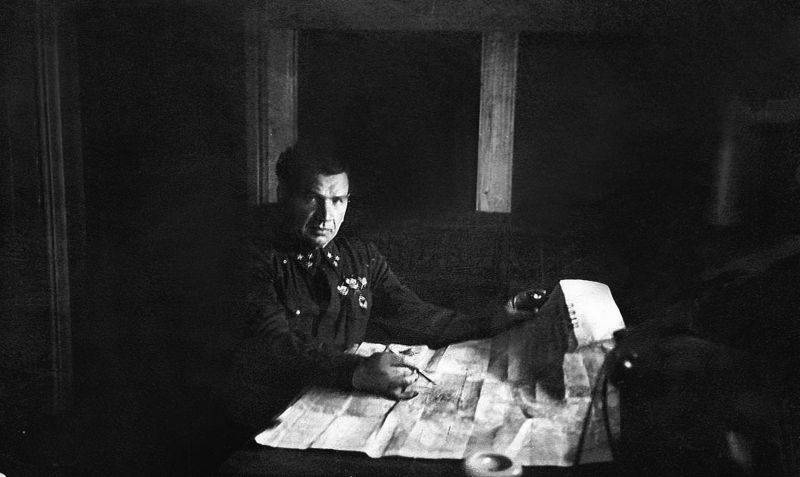
Commander of the 62nd Army, Lieutenant General Vasily Ivanovich Chuikov (1900–1982) working with a map during the battles in Stalingrad
In late September - early October 1942, active hostilities were fought on the northern outskirts for the villages of the Krasny Oktyabr and Barrikada factories, and from October 4 - for these factories themselves. At the same time, the Nazis were attacking in the center on Mamayev Kurgan and on the extreme right flank of the 62nd Army in the Orlovka area. The Nazis again captured Malakhov Kurgan. Now they could view and shoot through the entire territory held by the Stalingrad garrison, as well as the crossings across the Volga. The troops defending in the area of the mouth of the Tsaritsa River had to retreat to the left bank of the Volga.
The 62nd Army responded with attacks from fresh 39th Guards, 193rd, and 308th Rifle Divisions. The battles were characterized by an extreme degree of bitterness. The 193rd division of General Smekhotvorov lost 6/4 of its personnel in 5 days of fighting. In the regiments of the 13th and 35th Guards and the 10th division of the NKVD, only headquarters remained for two weeks of fighting. Most of the German divisions were downsized to a regiment. The German 6th Army was losing striking power.
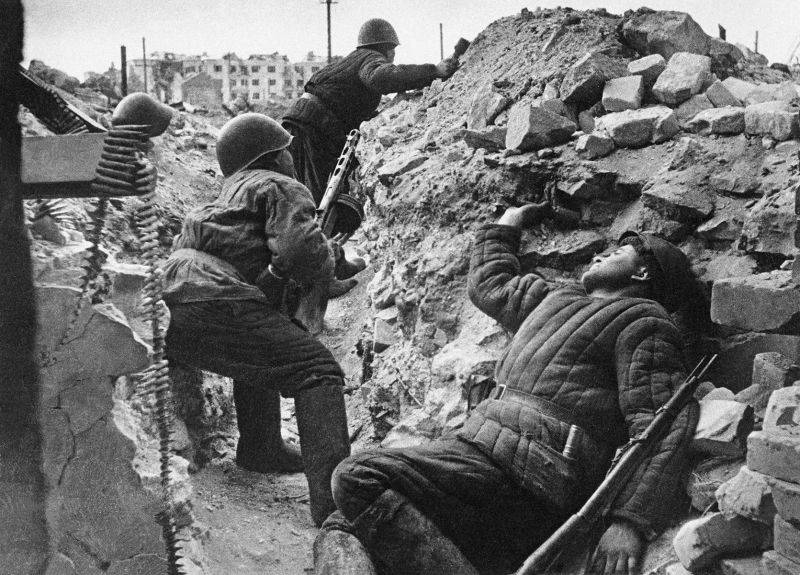
Soviet assault group before the attack in Stalingrad
Decisive assault
On October 14, 1942, Hitler ordered the army to go on the defensive along the entire Russian front line, except for the Stalingrad direction and the North Caucasus. It was the collapse of the entire German war strategy. However, the Germans still tried to take the Stalingrad ruins.
In mid-October, the 6th Army was preparing for a new decisive assault. Paulus concentrated in the area of factories on a 5-kilometer section of 5 divisions (including 2 tank divisions). Reinforcements, engineering and anti-tank units were pulled up to the city. 5 sapper battalions were transferred from the Reich by air. They replenished and prepared 8 German divisions, numbering 90 thousand soldiers and officers, with 2 guns and 300 tanks. The 300th Panzer and 14th Motorized Divisions were in reserve. The assault was supported by the 29th Air Corps in full strength.
Chuikov's army at that time had 55 men, 1 guns and mortars, and 400 tanks. The 80th Air Army had 8 combat aircraft.
On the morning of October 14, 1942, after powerful artillery preparation and air strikes, the Nazis stormed the city. 5 German divisions broke through on a 4-kilometer stretch between the Stalingrad Tractor Plant and the Barricades, trying to dismember the 62nd Army and destroy it. Only German planes were in the air. By evening, units of the 112th, 308th Rifle and 37th Guards Divisions, having suffered heavy losses, fought in the encirclement. On the 15th, the Nazis took the tractor factory, fell through to the Volga and cut the battle formations of the 62nd Army into two parts. In the north, a group of General Gorokhov was formed, which took up defensive positions in the Market-Spartanovka area and held out until the end of the entire battle.
On October 16, German troops attacked the main forces of the 62nd Army, leading the offensive along the Volga to the south. The army was bled. From some parts, only a few dozen people remained. On the 17th, Lyudnikov's 138th division was transported across the river and thrown into battle. On the 18th, German attacks lose their former power. The 6th German Army was exhausted physically and morally, bogged down in battles. By the end of October, the German offensive slowed down, although in the area between the Barrikady and Krasny Oktyabr factories, no more than a few hundred meters remained to go to the Volga. In early November, there were local battles.
On October 19, in order to alleviate the position of the 62nd Army, the troops of the Don Front of Rokossovsky went on the offensive from the area north of the city. The main blow was carried by the 66th Army of General Zhadov. The army attacked until 26 October, but without success. South of Stalingrad, on October 22, the shock group of Shumilov's 64th army launched an attack, but also without much success. The fighting continued until the beginning of November.
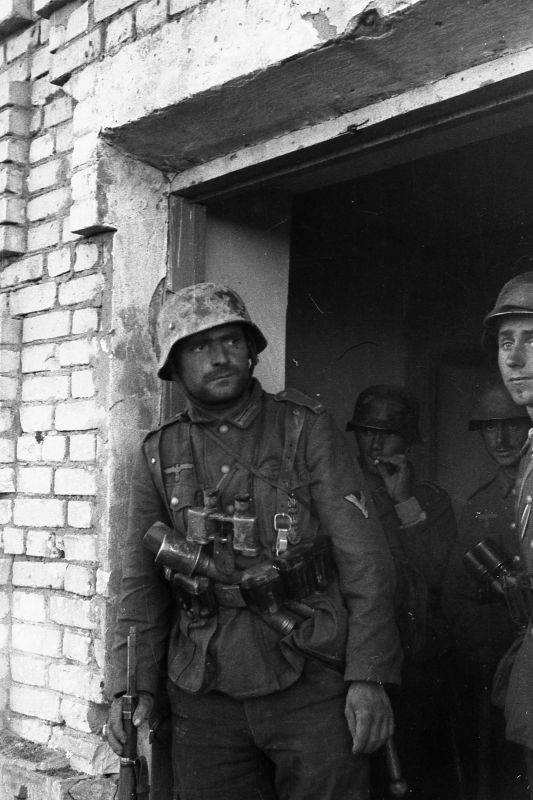
German soldiers at the entrance to the entrance of a destroyed building in Stalingrad. Autumn 1942
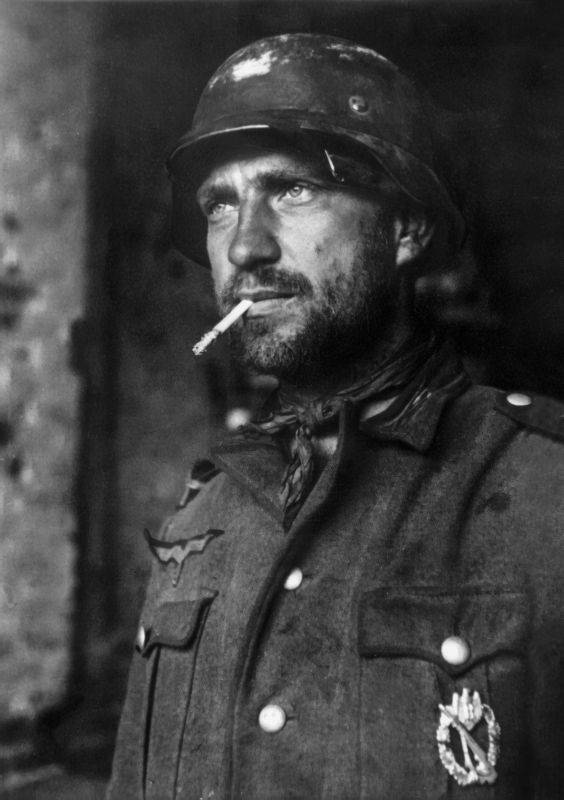
Portrait of a German soldier during the battles for Stalingrad
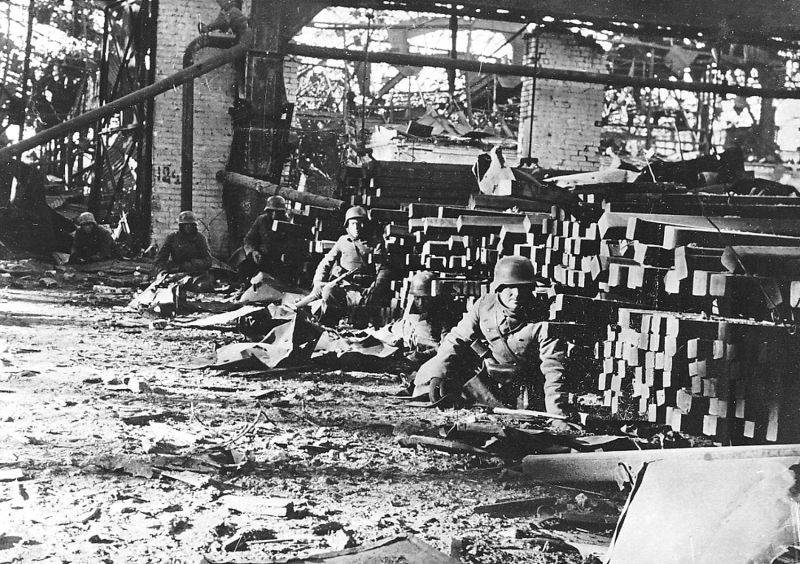
German infantry take cover behind stacks of steel blanks (blooms) at the Krasny Oktyabr plant during the battles for Stalingrad
"Uranus"
The Fuhrer demanded to take the city, and Paulus had to prepare another attack. On November 11, 1942, 7 German divisions (including 2 tank divisions) went on the attack again. At that time, there was an ice drift on the Volga, which greatly worsened the position of the 62nd Army, cut off from the rear. In a narrow section of 500–600 m near the Barrikady plant, the Nazis managed to break through the defenses of the 95th Infantry Division and reach the Volga.
Chuikov noted. The combat formations of the Chuikovites were cut for the third time. The 138th division was cut off from the main forces - the so-called. "Island of Ludnikov". This was the last success of the Paulus army. On the other sectors of the front, the Chuikovites held out. Fighting in the city continued until 20 November.
Chuikov won precious time. The selected German army was stuck in the ruins of the city, having lost the opportunity to maneuver. Stalingrad, as the Fuhrer feared, turned into "an all-devouring focus." In the battle between the Volga and the Don, the Germans lost hundreds of thousands of people. When the offensive fizzled out, the German group found itself on a huge arc with a peak near Stalingrad in the interfluve of the Volga and Don. Its flanks northwest and south of the city were defended by less efficient Romanian and Italian formations. There were no large operational reserves. Communications were stretched. The chief of the German General Staff, Halder, proposed to shorten the front line and withdraw divisions to the Don line. The Fuhrer was against it.
Favorable conditions appeared for the counteroffensive of the Red Army. From the end of September 1942, preparations began for a large offensive operation in the Stalingrad direction. At the first stage of the operation, they planned to encircle the 6th army of the enemy, then develop an offensive on Rostov, creating a threat of encirclement of the German group in the Caucasus.
They were going to strike the main blow in the southeast direction from the bridgeheads in the area of Serafimovich and Kletskaya in the zone of the 3rd Romanian army with access to the rear of the 6th army. This region of the steppe was so remote from Stalingrad that the German mobile formations concentrated around the city would not have had time to save the situation in the event of an enemy breakthrough. The second strike force was to advance south of Stalingrad from the Sarpinsky Lakes region in the zone of the 4th Romanian army, closing the encirclement in the Kalach region.

This time, the Soviet command succeeded in misleading the enemy about the place, time of the strike, and our forces. The blow was expected against the northern flank of Army Group B, in the sector of the 8th Italian Army. It was believed that the Russians were exhausted by heavy battles and did not have the strength for a large offensive, and this was a big mistake.
November 19, 1942 began the "Stalin holiday" - operation "Uranus". The Soviet armies made a breakthrough on both flanks - on the Don and south of Stalingrad - and began to envelop the enemy. The attempts of the Nazis to fend off the blow were belated. Tank and motorized formations, which were transferred to the place of the breakthrough, were late, entered into battle in parts, and were defeated under the blows of the superior forces of the Red Army. That is, what the Germans had done with our troops was repeated. The Russians turned out to be good students.
On November 23, the mobile formations of the Southwestern and Stalingrad fronts linked up east of Kalach. The Stalingrad cauldron was formed, into which 270 thousand enemy soldiers fell.
It was a turning point in the war.
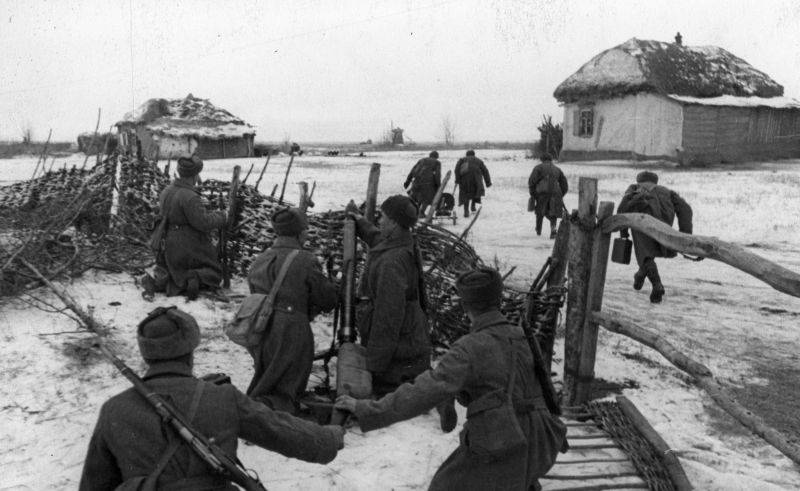
The calculation of the Soviet 82-mm mortar covers the retractable machine gunners near Stalingrad. December 1942
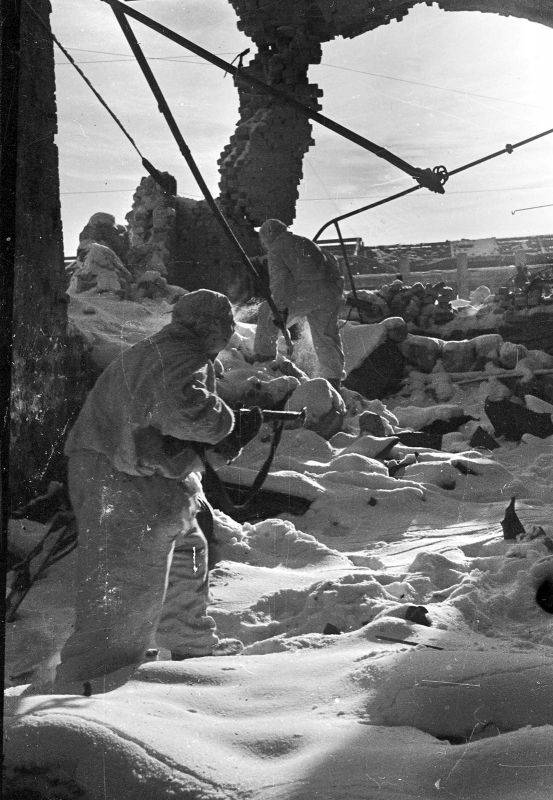
Soviet soldiers in camouflage suits are searching for the enemy in the workshop of the Stalingrad plant
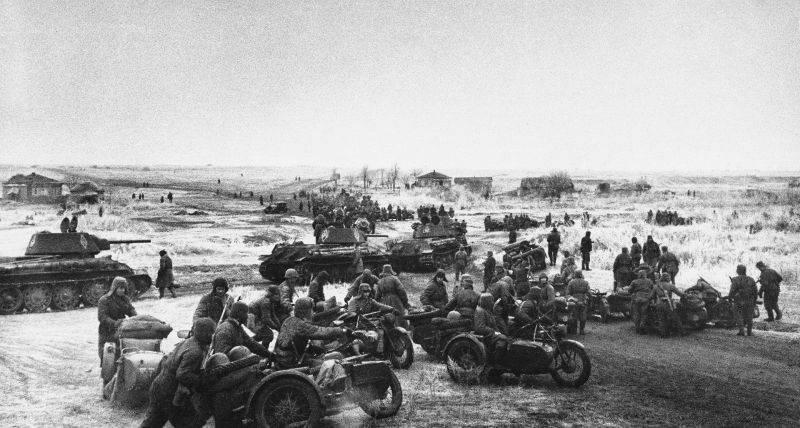
Soviet mechanized unit during the offensive near Stalingrad. In the foreground are M-72 motorcycles. Behind - tanks T-34-76. November 1942
- Alexander Samsonov
- https://ru.wikipedia.org/, http://waralbum.ru/
Information